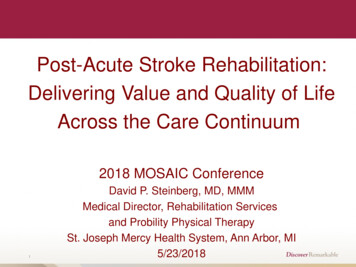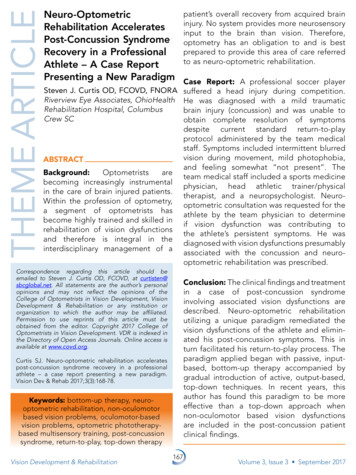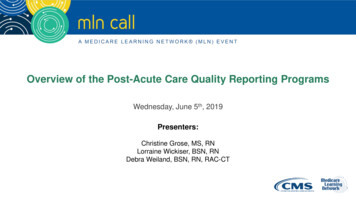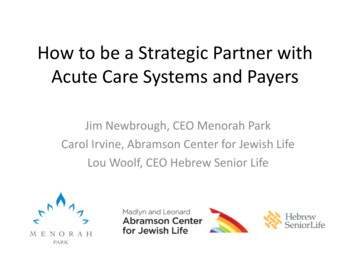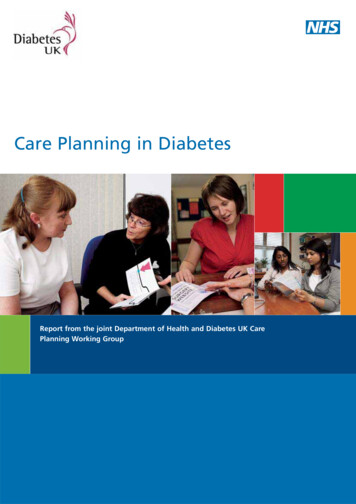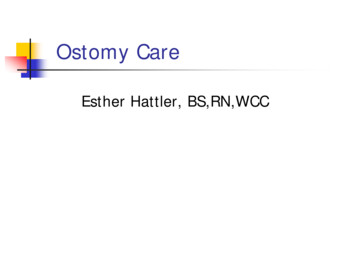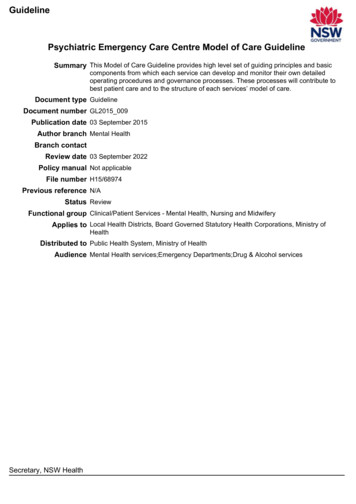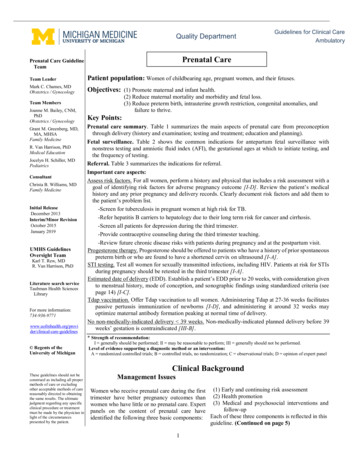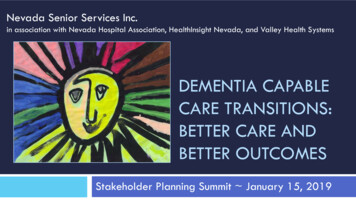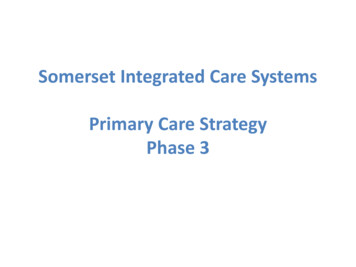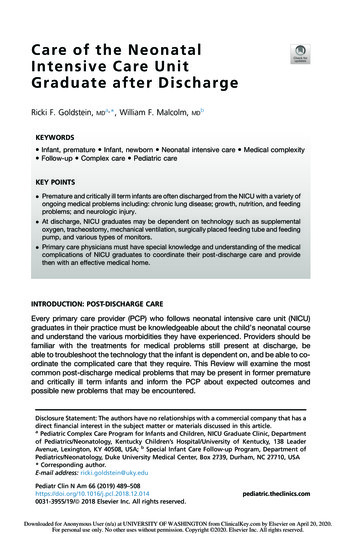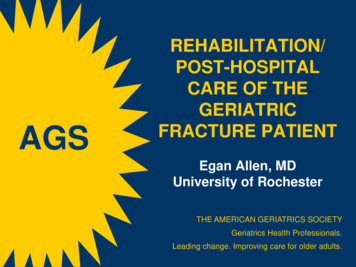
Transcription
AGSREHABILITATION/POST-HOSPITALCARE OF THEGERIATRICFRACTURE PATIENTEgan Allen, MDUniversity of RochesterTHE AMERICAN GERIATRICS SOCIETYGeriatrics Health Professionals.Leading change. Improving care for older adults.
WHAT IS COVERED Recovery rates post-fracture Goals and variables Rehabilitation across settings Subacute (SNF) rehabilitation Home care and falls assessment Transitions across settingsSlide 2
MORTALITY AFTERGERIATRIC HIP FRACTURE 7% at 1 month13% at 3 months24% at 12 months50% at 6 months for patients with end-stage dementiaFracture is marker of frailtyMortality increases with: Uncontrolled systemic disease Multiple comorbidities DementiaLu-Yao, et al. Am J Pub Health. 1994;84:1287-1291.Morrison RS, et al. JAMA. 2000;284:47-52.Slide 3
FUNCTIONAL RECOVERY AFTERGERIATRIC HIP FRACTURE Pre-fracture ability and post-fracture complicationsdrive recoverability At 6 months: 60% recover pre-fracture walking ability 50% recover pre-facture performance of ADLs 25% recover pre-facture performance of IADLs At 12 months: 54% able to walk unaided 40% able to perform all ADLs independently 25% require long-term SNF placementMagaziner, et al. J Gerontol. 1990;45:M101-M107.Slide 4
REHABILITATION GOALS Regain functionPain controlMaintain ROM and strength of unaffected limbsRestore ROM and strength of affected limbClarify long-term needs and develop care plansCommunicate prognosisPrevention of: Pressure soresConstipationDVTPneumoniaDepressionSlide 5
VARIABLES AFFECTINGREHABILITATION Pre-fracture chronic disease control COPD, CAD, HTN, DM, arthritis, CHF, anemia,incontinence, vision, hearing, malignancy, nutrition Cognitive status Mood Delirium Pre-fracture ambulatory status Weight-bearing status Type of fracture and repairSlide 6
REHABILITATION ACROSS SETTINGS Continual process from hospital to SNF to home/LTC Acute vs. subacute rehab: no differences in outcomesfor geriatric fracture patients 5 PT sessions per week likely beneficial A systematic home-based program may be effective No significant data supporting or refuting ongoinghome rehab s/p traditional rehab programMorrison RS, Siu AL. Medical aspects of hip fracture management. In:Cassel CK et al, ed. Geriatric Medicine: An Evidence-Based Approach.4th ed. New York, NY: Springer; 2003.Slide 7
ACUTE, IMMEDIATE POST-OP REHAB Pain control Stand, transfer Walker use instruction Early unrestricted weight-bearing accelerates hospitald/c without increasing risks of operative complications Full weight-bearing vs. non-weight-bearing exercises:similar outcomes in strength, balance, and functionMorrison RS, Siu AL. Medical aspects of hip fracture management.In: Cassel CK et al, ed. Geriatric Medicine: An Evidence-BasedApproach. 4th ed. New York, NY: Springer; 2003.Slide 8
SUBACUTE (SNF) REHAB Up to 100 days covered by Medicare if 3-dayhospital stay Regional and facility variations Interdisciplinary care usual and mandatedPTSocial workOTRecreational therapyMedicalNutritionNursingClergySlide 9
SUBACUTE (SNF) REHABPARTNERSHIP CONSIDERATIONS Full time, on-site medical staff Dedicated transitional care/rehab unit Ability to manage parenteral meds, multidrug-resistantorganisms, medical comorbidities Shared electronic data systems Financial/institutional relationships Weekend therapy and admission ability LocationSlide 10
HOME CARE Requires order from physician Generally short and episodic care only Frequency of visits limited Post-rehab ongoing home therapy not proveneffective to improve function or decreaserepeat falls However, may be of benefit for other reasonsSlide 11
FALLS ASSESSMENT In-home assessment and intervention not yetproven effective PROFET FACT — ongoing in New Zealand Health assessment Home hazard identification Bone health assessment and treatment Structured exercise program PQRI 2008 — Screening for Future Falls RiskSlide 12
ELEMENTS OF FALLS ASSESSMENT Predisposing risk factors/ diseases Balance and gait assessment Single best means of identifying pts at risk: Get Up and Go Performance Oriented Assessment of Mobility Review of previous fall situationsSlide 13
FALL PREVENTION Environmental modifications Lighting, rugs, toys, pets, bed/chair height, bars/rails Endurance, resistance, flexibility and balancetraining effective (FICSIT) Medication management Orthostasis, psychoactives, anticholinergics Vision exam and cataract removal Talking and walkingSlide 14
TRANSITIONS IN CARE“ random events connected to highlyvariable actions with only a remotepossibility of meeting impliedexpectations.”Roger Resar, MDSenior Fellow, Institute for Healthcare ImprovementSlide 15
POOR TRANSITIONS Duplication of tests and services Medication errors Increased costs Increased readmissions Patient/family dissatisfaction Friction among cliniciansColeman. JAGS 2003;51:549-555.Kripalni, et al. J Hosp Med. 2007;2:314-323.Slide 16
COMPONENTS OFA SUCCESSFUL TRANSITION Communication clinician : clinician Communication clinician : patient/caregiver Medication reconciliation Patient self-care knowledgemake the next move?”“What do you need to Clearly defined follow-up expectations Mindset of continuous managementColeman. JAGS 2003;51:549-555.Kripalni, et al. J Hosp Med. 2007;2:314-323.Slide 17
DISCHARGE SUMMARY ELEMENTS FORGERIATRIC FRACTURE PATIENTS Baseline and current functional statusMedication reconciliationRequirements for durable medical equipmentAdvance directivesStatement of prognosisDisposition: FromTo in short termTo in long termComplete and accurate summary of complicationsListing of involved clinicians and contact infoSlide 18
THANK YOU FOR YOUR TIME!Visit us n.com/company/american-geriatricssocietySlide 19
Cassel CK et al, ed. Geriatric Medicine: An Evidence-Based Approach. 4th ed. New York, NY: Springer; 2003. ACUTE, IMMEDIATE POST-OP REHAB Pain control Stand, transfer Walker use instructio
